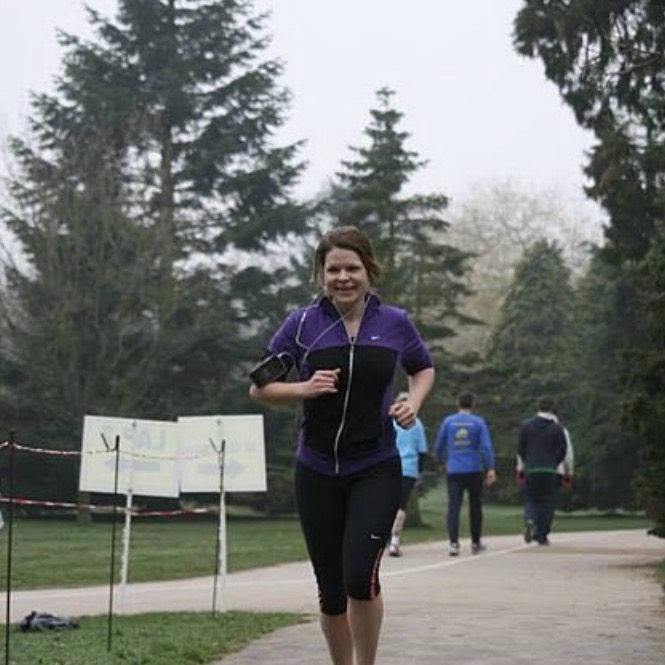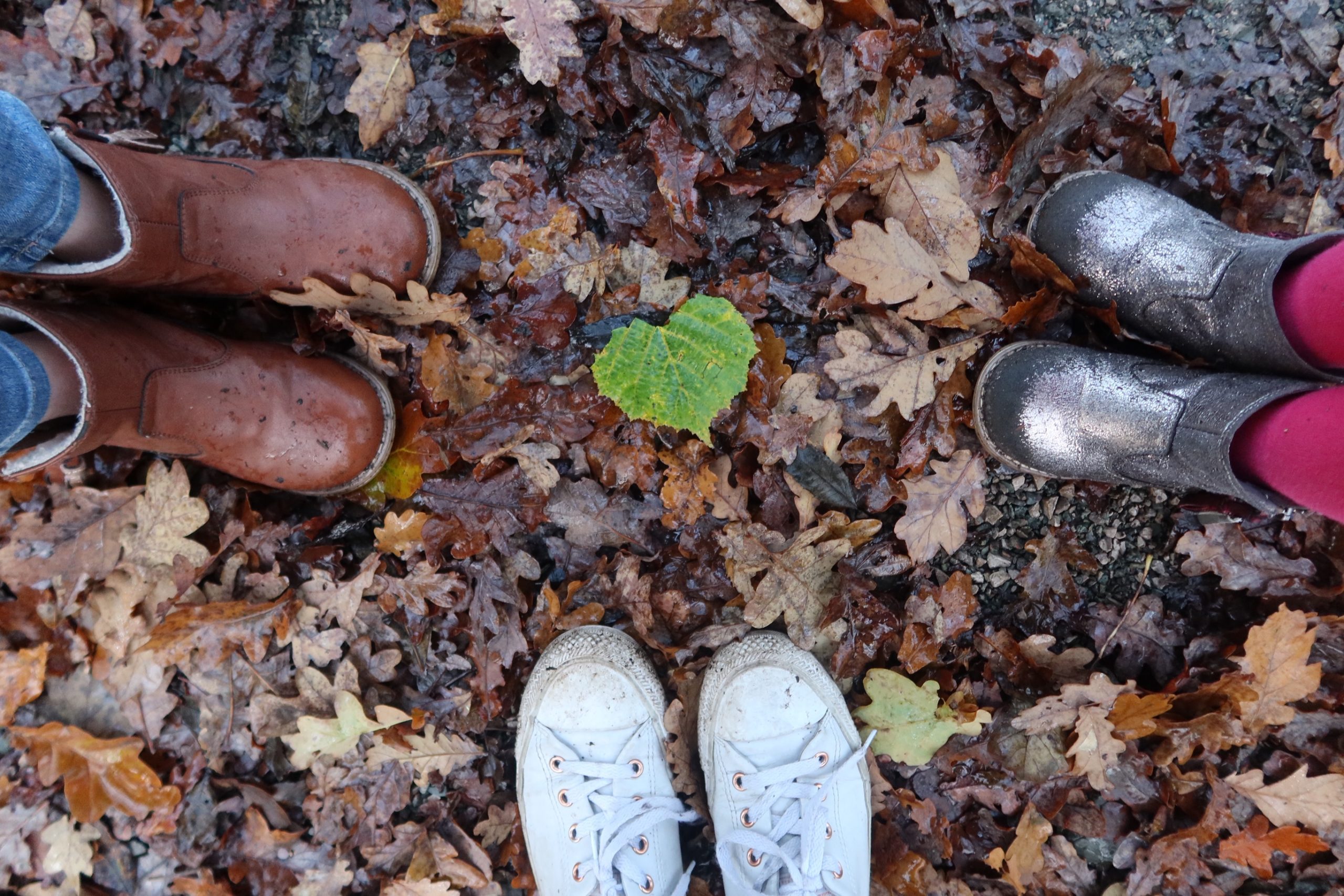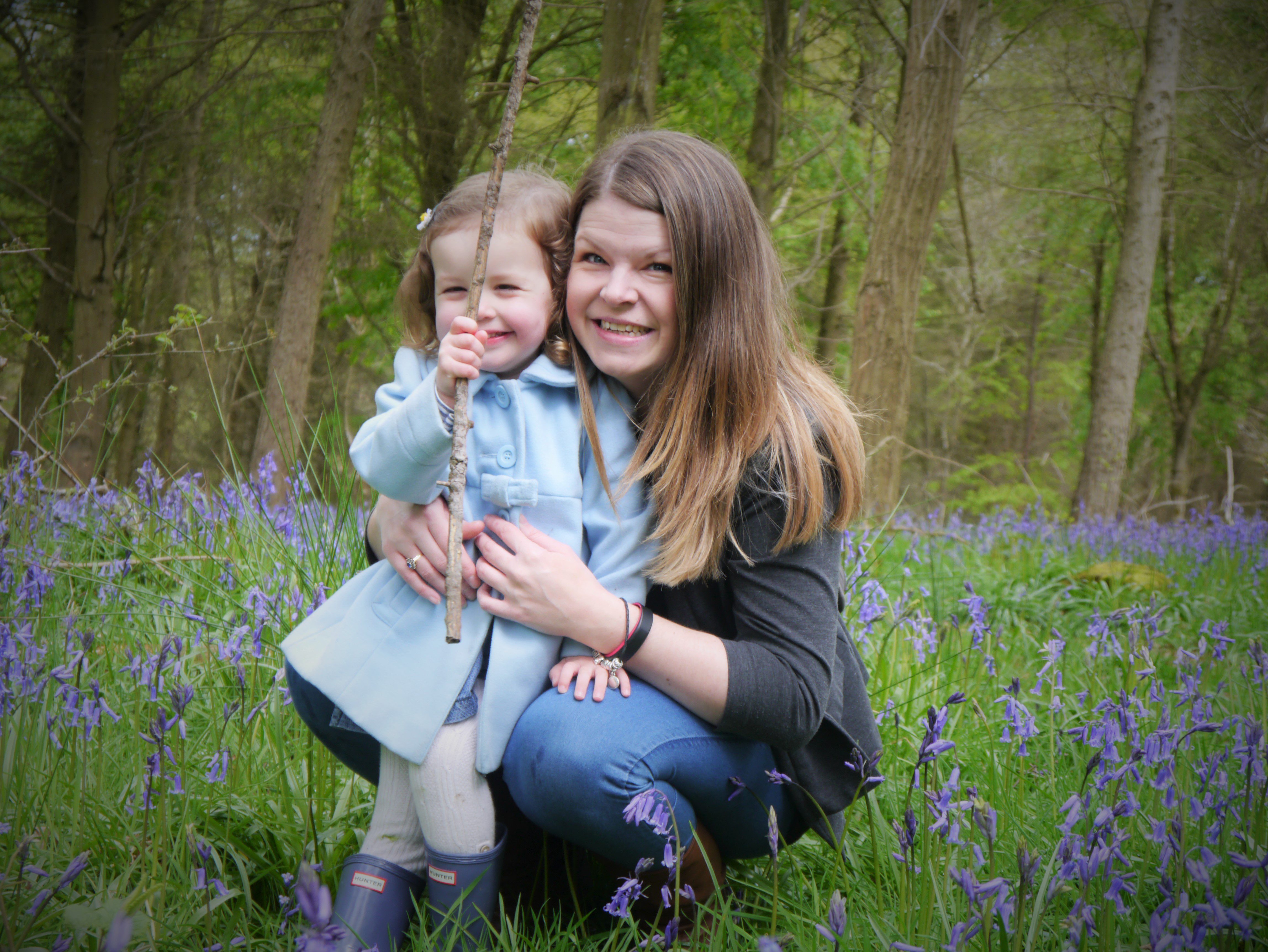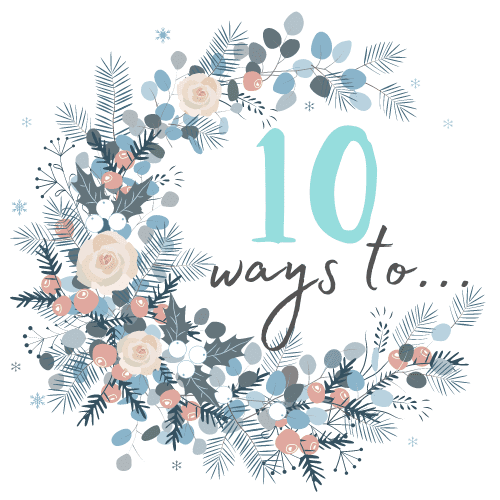


Mental Health Challenges Post-Lockdown & How to Help
This is a collaborative post
Like many people across the UK at the moment, I am feeling almost as uncomfortable with the easing of lockdown as I was at the point it was announced. Having spent 13 weeks at home and tackled the horrible anxiety, lack of sleep and panic at the start of lockdown, I am now experiencing similar mental health symptoms at the other end; with concerns about what the future holds for all of us and nervousness about second waves and life returning to ‘Normal’
Here are just some of the mental health challenges we might all be facing post lockdown and some simple steps to help tackle them.
The boundaries between home and work life are blurring….
The children may or may not be going back to school, but your employer may be asking you to work from home for the foreseeable future. Having been working from home for so long; you may be finding it hard, particularly with modern technology and the 24/7 availability that comes with it. Remember that if you were in the workplace you’d most likely take a lunch break, chat to a colleague at the water cooler and log off on time to go and collect the kids. Just because you are at home doesn’t mean those elements don’t apply.
How to help – There is a tendency to feel like you need to be instantly available whenever anyone contacts you, for fear of looking like you’re not working or that you are skiving when working from home. The reality is – you don’t. Try and use your diary to mark clear work and non working times and take that lunch break – getting outside for a walk or some fresh air to have a break can do the world of good for your mental health. Avoid checking your work emails on your phone in the evenings or weekends – you will inevitably get dragged back into something and its important to have a differentiator between work and home life, even more so when there is no physical distance. Where possible, work in a set space away from the rest of ‘family life’ so you can shut the door and ‘leave the office’ at the end of the working day.
Lack of physical contact…
To put it simply – I just want to give my Dad a hug, he’s been shielding since mid March, lives alone and it pained me so much to not go and see him on the anniversary of my Mum’s death. 🙁 Whilst we have been able to go and see him socially distanced in the garden, I’d love to be able to give him a big hug. Whilst in theory he could join our family bubble, we both feel safer avoiding physical contact.
How to help – Although not the same, you can show affection to your loved ones in other ways. Ensuring regular virtual face to face contact can really help. Socially distanced visits can also be a huge pick me up to those living alone. My Dad even put on a new shirt and joked that it was like waiting for a prison visit. Don’t underestimate the power of even a visit from the other end of the garden.
Adapting to the new normal
I felt strangely emotional visiting a local National Trust location Baddesley Clinton this week – the familiar hustle and bustle of voices, laughter and conversation, except it wasn’t and isn’t normal at all. One way systems, social distancing and hygiene measures – I felt both happiness and sadness that this is the reality of life for the short term at least.
How to help – Remember that hopefully the changes to our freedom and daily life aren’t forever. However, they are needed, to help sustain a long term healthy future for all of us. Whilst it’s perfectly normal to miss our old normal; now is also a great time to think about the elements of our old normal that we don’t miss; and how we want our lives to be going forward.
Fear of venturing out…
After being at home and only within the four walls or perhaps your garden for the last 13 weeks, the prospect of venturing out for the first time may also be a little daunting! You have no idea what to expect, may be worried about others coming close to you, or worried about the fear of catching COVID-19 or passing it on to someone you care about.
How to help – Take one step at a time. Set yourself realistic goals – e.g. go for a walk, go on an outdoors activity, go to your local shop etc. In many cases, the unknown of going out and what it would be like is far worse than the reality. I was so pleasantly surprised when I headed out for the first time this week. Whilst I am unlikely to head to my city’s main shopping centre any time soon, I now feel much more comfortable with outdoors activities. Slowly but surely I will ease my way back out. Exercise and physical activity can also keep your immune system strong so download the couch to 5k app, or find a personal trainer near you to help keep you moving and release some endorphins.
Fear of a second wave…
For me this is the biggest fear. Children returning to school, non essential shops reopening, the expected crowds of people heading to pubs and leisure venues, not to mention the huge number of people not following the social distancing guidelines and cramming onto our beaches today. I am worried about the impact of this and whether a second wave will happen. Everything seems to be being opened up quickly.
How to help – Whilst we can’t necessarily control a second wave, we can take steps to try and prevent this – keeping socially distanced, ensuring good hygiene and hand washing and reducing the amount of contact we have with others. That said, the science is showing that numbers have hugely reduced and it all comes down to a level of risk and how much risk we are prepared to take.
Anger and frustration towards others
I am particularly guilty of this. I feel INCREDIBLY frustrated and angry when I see people flaunting a blatant disregard for the rules, particularly as many are on furlough and being paid to stay safe at home and I can get myself a wee bit worked up! These feelings however have no positive benefit.
How to help – remember you can only control what you do, and therefore whilst difficult, you need to focus on the things you have influence over, and not those who you do not know. Don’t get dragged into public debates or comment on social media posts, it will just raise your blood pressure and make you feel worse. Vent in private or to a trusted friend if you must. (I must lol)
Information Overload
Just like at the start of lockdown, there is a LOT of information to take in. Whilst the briefings have been relatively clear, there is still some confusion about what can and can’t be done and when, and media in general can add to this confusion, announcing things before they are officially confirmed or predicting what part of the lifting lockdown comes next. This huge amount of new information to process can be a lot to deal with, causing your mind to race at bedtime when you should be trying to sleep.
How to help – choose your sources carefully. In the same way you know never to trust a Daily Express severe weather warning (TEN FEET OF SNOW TOMORROW!), remember that there are some publications who’s content you should read with caution. Stick to the official announcements and if things are causing you to become anxious or stressed, turn off the TV, stick to the briefing updates and read a book. Some things you need to know, others you do not.
Panicking about lost routines…
After so long at home, all of our routines are out of the window. Suddenly we’re dealt with the prospect of the schools going back and my kids are still going to bed at 9.30pm. Its going to take a while to adapt. I don’t want to go back into the office. Ive found a new sense of work life balance and I am loving the freedom that it has given me to exercise in the mornings.
How to help – Accept that just like it was at the beginning, returning back to our normal routines will involve a period of adjustment for everyone. You’re likely to have a week or two where it feels impossible, but you will get there. If you haven’t worked flexibly before – now may be a good time to submit that flexible working request, particularly if you have proven that working from home or around your childcare has worked efficiently.
Facing pressure to go out…
Lots of people are now feeling more comfortable meeting up in groups or booking tables for the pub on July 4th. You may not feel comfortable yet, but don’t want to seem like a prude or that you are being over cautious.
How to help – Remember that everyone’s situations are different. Just because one person feels comfortable doesn’t mean that you need to. You don’t need to justify your views to anyone, just do what feels right for you, your family and your individual circumstances.
Feeling like you’re failing at everything…
For the last 13-14 weeks you’ve been attempting to balance home life, home schooling AND your day job all at the same time and its been bloody hard. As a result you feel like you’ve not really done anything as well as you could have done. You’ve been distracted at work, may have been less responsive, you may have been shouty Mum more times than you care to mention and your patience may have started to wane.
How to help – Celebrate your achievements – remember when the thought of the 6 week holidays was enough to make your 2019 self break out in a cold sweat, and the thought of school closures was a terrifying prospect?? Well you’ve managed it for THREE WHOLE MONTHS. You’ve kept your family safe, you’ve survived with whole days around your other half and the kids (for the main at least) are still smiling. You’ve done bloody amazing. Give yourself a break!!
Finally, remember that you are not alone. There are so many people who will be feeling the same as you. If your children themselves are showing signs of anxiety or fear; here are some other sources which may help:
- Mentalhealth.org.uk – Talking to your children
- Mind UK – A handy guide for young people – this resource is great for young people to read themselves as it explains in simple and age appropriate terms about coronavirus and what they can do to help.
- Coronavirus animation for children
- Coronavirus video for children
- Governments official guidance for parents on how to support children’s mental health.
- Children’s Society advice and support for parents and young people
- Young Minds – a guide to Supporting your child during the coronavirus pandemic.
- NSPCC Coronavirus advice and support for parents and carers.
Talking and reaching out
One of the main challenges facing people who have signs and symptoms of mental health disorders is a reluctance to talk. Many of us wouldn’t think twice about telling a friend or work colleague if we had a migraine or a twisted ankle, but we shut down when it comes to speaking about mental health. Talking can help you to express yourself and channel emotions and it can also give you a different perspective.
If you want to chat about how you’re feeling or the symptoms you are experiencing, you can open up to somebody you know or seek professional advice. Visit your GP or contact practices or clinics like The Awareness Centre that offer services such as counselling and psychotherapy. You can choose between virtual and in-person consultations or speak to a therapist or counsellor over the phone. Reaching out is often the hardest step, but it paves the way for being more open about mental health and it will enable you to access the support you need.

How running has saved my sanity during lockdown
I’ve been at home now for 13 weeks. 91 days, 2184 days. However you look at it – that’s a bloody long time. Back in the middle of March, looking back, I honestly had no idea what lay ahead of us. I’d seen the pandemic spreading across China and remember being shocked when the Lombardy region of Italy was sent into lockdown; my close friend in Milan being one of the first to experience that reality. But although I knew it was likely to reach the UK soon after; I never expected that 13 weeks on, we would only just be starting to see signs of lockdown easing and that life as I knew it would change significantly.
After some pretty big wobbles back at the start of lockdown, the difference from my first month to this last one has been huge, going from being literally housebound to exercising outside daily. I can honestly say that my daily exercise has literally saved my sanity and helped protect my mental health during what otherwise would have been a very triggering time.
Health Anxiety during a Pandemic
As someone with health anxiety, I generally struggle to cope when dealing with unknown or unexpected illnesses; whether that be something that is on the surface relatively minor like a random sickness bug from either of my children (I am an emetophobic!) or the more severe health concerns, such as aftermath of my dad’s heart attack (where he basically saved his own life); or losing my previously fit and healthy 63 year old Mum to breast cancer after a very short illness.
I personally too have had my fair share of stressful health experiences including contracting Sepsis after my daughter was born and most recently having a melanoma in situ removed from my back. I have a tendency to always fear the worst when it comes to ailments and symptoms, heightening what my therapist described as ‘localised panic disorder’. At its worst, my worries could bring on panic attacks or ‘episodes’ out of the blue where I struggle to cope but don’t always have a clear trigger as to why.
At the start of 2020 I felt in a good place. I was exercising regularly having completed the couch to 5k running programme, was having some much needed ‘me time’ at my running club twice a week and after having sessions of cognitive behavioural therapy and using some mindfulness techniques such as Calm and Headspace, I finally felt much more resilient and that I had my anxiety back under control.
Then lockdown hit, and I’m not going to lie, I found those first weeks of lockdown at home incredibly tough. The panic buying and empty shelves really made me fear the worst, the daily updates of cases and deaths, and the building of Nightingale hospitals across the country meant I found my mind working in overdrive, feeling nauseous and unable to sleep, often lying awake till the early hours of the morning struggling to switch off from the constant barrage of breaking news updates and bad news. I was scared. Not only of getting coronavirus or my friends and vulnerable family members falling ill; but also of getting ill with anything else that may require a hospital visit. No one could tell me that everything was going to be ok; because none of us really knew, not completely, whether it would be.
From the 17th March until the 26th April I didn’t leave the house at all. Not even for a short walk around the block. Despite having just completed my couch to 5k and enjoying the freedom that gave me; I felt to exhausted, too weak, and too worried to leave the house.
Suddenly at the end of April something switched in my mind. Whether this was the point that I realised this lockdown was likely to be for the long haul, or whether I just started to feel trapped within the confines of my four walls I will never really know, but I signed up for a virtual running challenge and it gave me the kick up the backside that I needed to put my mental health first.
Since the 27th April I have ran or walked every day bar 1 (Erin’s Birthday!), ensuring I meet 10,000 steps a day and getting some much needed time outside. In the last 2 months I have so far covered over 250km by walking/running alternate days and am now running a minimum of 5k each time. I am super proud of my commitment to running and long may it continue!
How running has helped my mental health:
- Sense of achievement – I’ve always been relatively competitive in nature and love to set myself goals, targets and objectives to work towards. Once I set my mind to something, I am normally pretty good at sticking to it, so having a virtual running challenge meant that I could focus on achieving my goal. I tracked my km’s every day; even making a little list to total up my progress, and seeing that I was moving forward and getting closer after each session really kept my motivation high. During lockdown it can be easy to feel like you’re failing at everything, so having even the smallest of achievements to celebrate was a real positive.
- Improved physical fitness – Many of those who have contracted coronavirus have been overweight; and carrying far more weight than I should be myself, I felt that exercising and improving my level of fitness would give me the best chance of fighting coronavirus if I was unlucky enough to contract it. I started taking my daily vitamins, trying to eat better and ensure I reached at least 10,000 steps a day. My strength and stamina has improved hugely over this period and during lockdown I completed my first ever 10k.
- Better sleep – Adding in physical exercise to my day meant that when it came to bedtime, I was physically more tired and have found myself able to switch off more easily. This along with limiting my social media channels to reliable news sources and reading more books before bed had a big impact on my sleeping patterns.
- Physical feel good – Going out early mornings for a run or walk has really set me up for the day; releasing endorphins and improving my mood. Although at times running has felt tough (particularly in the heat) its never really felt like a chore. I am never normally a morning person, so setting my alarm for 6am and going out before the girls wake up has been a massive change to my routine but has felt like the perfect time to go.

- The SILENCE – There has been something so magical about going out running early in the morning during lockdown. I head out about 6.30am and hearing no cars, seeing no traffic jams and not having to worry too much about crossing the road has felt so surreal. This empty space and freedom was peaceful and calm. I will miss this as the world starts to open for business again. This sounds like a huge cliche, but sometimes I’d stop for a few minutes just to listen to the birds sing by the lake. I can’t remember the last time I ever just stopped and took it all in.
- Audio books – For a bit of lighthearted escapism, I’ve been listening to some audio books whilst I run. I’ve laughed; I’ve cried (almost) and I’ve let out little gasps of shock mid run by becoming so absorbed in my book that I kind of forget what I am doing. Whilst I love running to a fast beat when I’m trying to run a bit quicker, I’m perfectly content plodding around listening to my books and it takes me off in to another world for a while.
- Time away from the children – As harsh as this may sound and as much as I have honestly adored spending time with my girls; all day, every day, 24/7 is pretty relentless. This hour to myself before they wake up and physically descend on me is a rare treat. With both girls at home (potentially till September) this is something that I feel is really needed.
- Discovering hidden treasures – Planning out different running routes and exploring my local community has been amazing – I have found so many beautiful little cut throughs, bridal paths and open woodland that I will be honest I never even knew existing pre lockdown and I’ve lived here for 7 years! Taking some time to appreciate the outdoors and see the colours, flowers and appreciate the change in the seasons has been really good for the soul.
- Giving Hope – The sense of community in my local town has been amazing – from positivity rock lines to handprint rainbows and messages to our key-workers and NHS heroes. Spotting all these community thank yous on my runs has really raised a smile and I’ve been capturing them on my phone camera for my lockdown journal.
- Staying connected – My virtual running group has a Facebook group where lots of lovely ladies share inspiration, advice and support, whether they are running 1k or 20k, fast or slow, it’s been really lovely to see and learn more about people’s reasons for wanting to run. We’ve celebrated achievements, helped people refine their mojo, and inspired others to get off the couch and head out the door. It’s been a hugely valued resource.
Now that I have adapted to this new normal, I am hoping that whatever post lockdown brings, I can retain this sense of freedom; this stress release and this sense of solidarity that running has given me. If you’re thinking of starting running yourself, the couch to 5k is a great place to start. I answer all your questions on the programme and how it works here.
What has kept you sane during lockdown?

Chasing the perfect smile…
*This is a collaborative post
I absolutely hate having my photo taken. My smile is always just a little bit awkward, usually with my mouth firmly closed in some kind of painful grimace which shows just how much I want the moment to be over, wishing I was the person behind the camera and not in front of it. As a Mother, given the choice, I am ALWAYS the one behind the lens. Because of this, when I look back at memories of my children growing up; its always my partner with the girls, their three smiling faces beaming back at the camera, with my face know where to be seen. It has to stop.
Since I lost my own Mum in 2013, I cherish all those photos I have of my own childhood – me and my Mum together, smiling and happy. She didn’t let concerns over her image stop her from being present and in the moment – and neither can I.
I hate showing my teeth, and despite having had years of orthodontic treatment as a child, my teeth are still not straight. I will never forget those days of jaw impressions which made me feel sick (when my orthodontist insisted on doing both top and bottom at the same time despite me having a heavy cold). I remember having a bit of wayward wire digging into the side of my palette and having to go back to have it trimmed. I remember the day the braces were removed, and sticking to soft foods like potato waffles as it felt so strange biting down into anything else.
My teeth were much improved, but I got into the habit of pushing my tongue between my teeth when I swallow (god knows how) so somehow, despite having overnight retainers and fixed braces for years as a child, much of their handywork was pushed straight back by my repeated pushing against my teeth. Unless I change this habit, my teeth are unlikely to ever be straight!
Look on my bucketlist, and you will see just one item that relates to my appearance. I’m not a superficial person and I generally don’t care too much about the way I look, but I’ve always loved the ideas of getting veneers. I don’t mean the Simon Cowell bright white smile, or the kind you would see from a contestant on Love Island, I mean just straight white teeth, not discoloured from fizzy drinks, not with one crooked bottom tooth at the front, and one that I would be proud to show off and smile not just with my eyes, but with my whole face!
Veneers are a great way to repair crooked teeth, fill gaps between teeth, prevent overlapping or even discolouration such as flurosis which can be unsightly. Whether or not I will be brave enough to make that jump is yet to be seen but you only have to check out veneers London to see what a huge impact they can have!
Whether I have my veneers done or not, one thing is for sure, I can’t let hang ups about my physical appearance dictate the childhood memories that my kids have to look back on. I’ve made myself a promise that at least once a month we will get some photos of all four of us together, recording each milestone of my children as they grow up. Lets face it, these days fly past way too quickly and there’s no going back and doing it again!
Are you ever in the photo? Does your partner ever volunteer to take photos or is it always you behind the lens?

Childhood Asthma: Tips for Parents
*This is a collaborative post
Asthma in kids can be challenging to diagnose because even though it is the same condition as in adults, it affects children differently. Childhood asthma shares the same symptoms with several other conditions. Unfortunately, you cannot be sure if your kid has asthma without a proper medical check-up.
In addition, asthma tests for children younger than five years are never conclusive. Therefore, it is advisable that you continuously monitor your child for asthmatic symptoms. Visit the doctor whenever you notice any worrying sign.
Asthma Causes and Triggers
The common causes of childhood asthma are reactions to dust, mites, pollen, and the common cold, among others. Understanding these causes is essential, given that there is a reported increase in childhood asthma. One of the reasons is that kids today spend more time indoors, which consistently exposes them to allergens, especially dust.
Asthma in children can also be the result of conditions such as rhinitis, sinusitis, and abnormalities of the airways. Infections of the respiratory system, such as the respiratory syncytial virus (RSV) and bronchitis, can also trigger asthma.
Symptoms of Childhood Asthma
Irrespective of the cause, asthma limits your child’s ability in several ways. If it goes untreated, it can be life-threatening. Some of the symptoms to watch out for are:
- Chronic coughing, especially at night, during play, and when crying or laughing.
- Occasional rapid breathing, which is often accompanied by shortness of breath.
- Chronic fatigue and weakness.
- Tightening of the chest and neck muscles.
- Wheezing.
- Diagnosing Asthma in Children
Given the complexity of childhood asthma, it is essential to visit your doctor to be sure. Some of the methods your doctor will employ to diagnose your child are:
- Background questions: Sometimes, the asthma symptoms may be over by the time you get to the doctor’s office. The physician will depend on you to get details of the disease. Your doctor may ask questions about any family history of asthma or respiratory illnesses as studies have found the risk of someone developing asthma has a strong genetic component.
- Spirometry: This test used to diagnose asthma by measuring the amount of air your child can exhale and how fast. The lung function tests can be taken after exercise or after taking asthma medications.
- Brochoprovocation: This is another lung function test. It uses spirometry to determine how the lungs react to specific triggers like cold air and exercise.
- Nitride oxide test: Measuring the amount of nitride oxide in the child’s exhaled breath is essential
when determining the type of medication that is suitable. - X-rays: Your doctor might resort to this method if your child’s asthma has worsened. It is done to determine other underlying triggers, such as gastroesophageal reflux disease and sinus infections.
Unfortunately, some of these tests might not be accurate or even possible in children younger than five years. Therefore, the doctor will depend largely on your story. Consequently, you should prepare a definitive list of worrying symptoms in advance.
Treatment of Childhood Asthma
Your doctor will come up with an asthma treatment plan after ascertaining that your child is affected. The type of treatment to be administered will depend on the severity of the disease. Asthma medications fall into two categories:
Quick-relief medications: They are also known as rescue medications as their primary function is to open the airways. You can use these during an asthma attack or before exercise, depending on the doctor’s recommendation. The medication is inhaled, administered orally, or intravenously.
Long-term medications: These are prescribed to prevent attacks and control asthma symptoms. The common ones include inhaled corticosteroids and long-acting beta-agonists. Your doctor might also recommend oral asthma treatment medications.
Understanding childhood asthma symptoms and seeking prompt treatment makes it possible to manage your child’s condition. Therefore, work closely with your doctor and learn all you can about asthma prevention and control as well as the administration of asthma treatment.
An Air Purifier can ease Asthma
It’s proven that many triggers within our homes directly impact asthma sufferers and those with respiratory problems. Unfortunately, opening doors and windows isn’t always an option to expel the particles floating around indoors, as the outdoor air can bring in further triggers or even pollution. If you want to remove these triggers, explore purchasing an air purifier that’s proven to tackle these issues. The Pure & Clean is an air and surface purifier developed by ActivePure Technology that has significant scientific proof in improving quality of life. It uses NASA adapted technology and not only removes 99.96% of all airborne allergens, pollutants, viruses, bacteria and more in 3 minutes; it also destroys microorganisms on surfaces. The ActivePure Pure & Clean is safe to use with people and animals in the room and is a non-invasive way to maintain an allergy-free home while improving everyone’s air quality.

ARFID Symptoms and Selective Eating
Have you heard of ARFID or selective eating disorder? If you have a child who has ARFID or is showing the ARFID symptoms, then you have my sympathy – life with a child who has a number of challenges about food and eating can be incredibly difficult. Whilst on the surface these children may be referred to as fussy or picky eaters, the reality is far more challenging to deal with! At the time of writing we have no official ARFID diagnosis from our GP, however my youngest daughter has shown signs and symptoms of ARFID from a very young age.
If you are new to my blog you may not know that we have been on quite the journey with Neve’s eating. From the moment we started weaning Neve at 6 months old, getting her to consume any food at all was a real challenge. Having already had one picky eater, I was keen to encourage a wide palette with Neve, mixing traditional weaning with baby led weaning in the hope of exposing her to a wide range of tastes and flavours. Unfortunately, Neve had caught a sickness bug at 5 months old just prior to experiencing food for the first time, and the view of medics and dieticians we have spoken to since was that this appeared to have had a somewhat negative effect on her association with food and unfamiliar textures, making her quite anxious about food even at such a young age.
As a baby whenever we tried to feed her, whether it would be baby led or traditional puree based food, she would regularly gag and heave, despite offering very small quantities of food at a time. She appeared to be scared of choking even with very smooth foods and on the rare occasion where I managed to encourage her to eat a small bowl of mashed up veg or fruit or puree, she would often vomit it all up just a few moments later, usually because one mouthful had triggered her gag reflex or made her nervous. As time went on, she got very anxious and upset when we tried to feed her. Whilst initially we were told to persist and that this was something she would grow out of, we were eventually referred to a dietician when she was around 1, as at this point the only foods we could get her to eat were completely smooth purees or yoghurts.
We have come a long way since but it has been a hard and exhausting experience for us all. Neve is now 3 and a half, and whilst she is still yet to eat anything like normal meals, she now has a small but perfectly formed list of “safe foods” which I can probably count on two hands, but that are effectively keeping her alive! She also now takes a daily vitamin, so I have to worry less about her not getting the vitamins and nutrients that her diet was most definitely lacking.
When you have a child who shows ARFID symptoms, I will be the first to admit that at times it is incredibly draining, mentally exhausting and upsetting watching your child refuse to eat. There is also the tendency for other people to judge and blame the parents, assuming that we have encouraged her behaviour, failed to offer her the correct foods or that her actions are simply learned behaviour; and that we as parents have somehow manifested this behaviour by not trying hard enough. Whilst I can see her eating and safe foods have now become habitual, I would love any one who judged my parenting to experience just a week of meal times with Neve to realise that “persisting” with a child who clearly has strong anxieties and a stubborn nature around food, is incredibly difficult.
After a few years of seeing the dietician I ended up discharging Neve, as I found the practical assistance and support we got pretty poor. At each appointment they would simply take her weight and say that she was within the normal range, before telling me all the foods that she should be eating (as if I didn’t already feel guilty enough and ha). Other than things I had already tried many many times before, no real practical assistance was given to try and help my daughter to eat and I found this mentally even more upsetting than trying to do it alone. After conversations with my GP who said she may be experiencing ARFID symptoms, particularly as it had gone on for so long, I decided to do my own research, and joined a group on Facebook for SED / AFRID parents and carers, which I have found an absolutely life saver – particularly knowing that I am not the only parent experiencing such challenges, and most importantly am not alone!
There have been many tears in this house over her eating (mostly mine) and whilst we are far from getting her diet to be “normal” there is finally some light at the end of the tunnel, with her becoming a little more willing to try and experiment with new flavours.
ARFID Symptoms or Picky Eating?
So how do you know if your child is showing ARFID symptoms (Avoidant Restrictive Food Intake Disorder or Selective Eating Disorder) or if they are just picky?
Some of the ARFID Symptoms that Neve has shown include:
- Having issues with a foods texture or touch – If a food doesn’t have a “safe” texture, Neve will refuse to even pick it up, touch or have it close to her.
- Having a very small list of safe foods which they are willing to eat. This may also change quite suddenly, particularly if it is served in a different visual fashion or with other non familiar foods.
- Avoidance of foods based on visual appearance or touching other items – if Neve’s plate is too full (even with familiar foods), is on the “wrong plate” or is next to items which she doesn’t recognise or like, she will refuse the whole plate.
- The concept of “they’ll eat when they’re hungry” doesn’t work – they just won’t eat. They will however get upset, tired and anxious.
- Difficulties in chewing food – panic and heaving if mouth is too full even on foods which are smooth or easy to swallow.
- Gagging and/or vomiting regularly during meals.
- Painfully slow eating and a need for constant encouragement and reassurance, breaking food into very small pieces to ensure she will eat.
- Showing no desire of hunger or eating unassisted or without encouragement
How to help a child with Symptoms of ARFID / Selective Eating Disorder
Over the last 6 months we have seen real progress with Neve’s eating; and as much as I would like to say I have been fundamental in this, the reality is that it is starting preschool that seems to have had a big impact. She is now at preschool for two full days, during which there is no option of safe foods or alternatives. Whilst in the younger years of a nursery setting we gave her pouches, these were removed. Many times she would still come home absolutely starving, having eaten very small quantities during the day, but eventually we started to see small signs of a willingness to try very tiny quantities of certain foods, starting with picking them up, holding them, licking them and then trying tiny little pieces.
If your child is showing signs of ARFID here are some things that may help
- Reward charts and encouragements – Positive reinforcement is required for pretty much every single meal, but giving a long term incentive and rewarding positive steps such as even holding, touching or licking a new food has been really helpful. Neve at 3 and a half responds really well to things like stickers, and whilst they don’t necessarily make her eat, they do give her a sense of pride and reward when she has.
- Try to stay calm – this is by FAR easier said than done. There are only so many times you can cook something to have it thrown on the floor or left to go cold before it starts to become upsetting. Try not to punish or shout – but do not reward extreme behaviour.
- Think carefully about portion size – Neve will decide whether or not she is going to eat based on visuals first, so even with safe foods, take care not to overwhelm by providing big portions or large quantities. Plates with small separated sections work really well.
- Break foods into tiny pieces – for example, we serve carrot in tiny little cubes, and if she eats a chicken nugget, I have to tear it into really small chunks which she can put into her mouth without heaving or starting to panic.
- Eating out can be a real challenge, as even if there are safe foods on the menu, they would be served in a way or amount that would overwhelm Neve and stop her from eating. As a result I tend to let her just have some bits off my plate instead and accept that she may need to eat when she gets home.
Do you have a child who shows signs of extreme picky eating that may have AFRID? I’d love to hear others experiences and what has helped you and your family.










